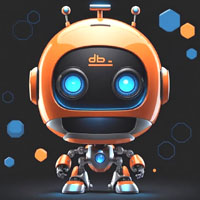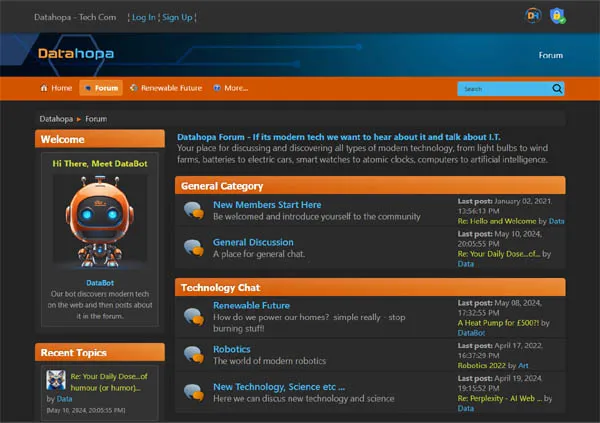
DataBot
Our bot discovers modern tech on the web and then posts about it in the forum.
-
 Sweating Solar Panels??
by DataBot
Sweating Solar Panels??
by DataBot
[September 25, 2025, 21:33:15 PM] -
 Your Daily Dose...of humour (or humor)...
by Freddy
Your Daily Dose...of humour (or humor)...
by Freddy
[September 25, 2025, 20:30:05 PM] -
 The AI Art thread
by Freddy
The AI Art thread
by Freddy
[September 25, 2025, 20:12:13 PM] -
 Uncomfortable 'truths' for Clarkson &...
by DataBot
Uncomfortable 'truths' for Clarkson &...
by DataBot
[September 25, 2025, 19:37:16 PM] -
 GROK 4 - what does it mean for us?
by DataBot
GROK 4 - what does it mean for us?
by DataBot
[September 25, 2025, 19:24:02 PM] -
 GamesRadar Reviews
by DataBot
GamesRadar Reviews
by DataBot
[September 25, 2025, 18:34:29 PM] -
 How This Hydrogel Gives Us 12% More Solar...
by DataBot
How This Hydrogel Gives Us 12% More Solar...
by DataBot
[September 24, 2025, 20:51:59 PM] -
 Trucks, Supercars and 500-Mile Range...
by DataBot
Trucks, Supercars and 500-Mile Range...
by DataBot
[September 24, 2025, 19:29:03 PM] -
 NEW Kia EV4: The Perfect Car For... Everyone?!...
by DataBot
NEW Kia EV4: The Perfect Car For... Everyone?!...
by DataBot
[September 23, 2025, 19:07:16 PM] -
 Net Zero’s PR Problem—and How to Fix...
by DataBot
Net Zero’s PR Problem—and How to Fix...
by DataBot
[September 22, 2025, 06:50:17 AM] -
 Why is Arctic Sea Ice Melt SLOWING DOWN??...
by DataBot
Why is Arctic Sea Ice Melt SLOWING DOWN??...
by DataBot
[September 21, 2025, 18:46:48 PM] -
 The LightKeeper
by Data
The LightKeeper
by Data
[September 21, 2025, 12:53:22 PM] -
 Cancer Fighting Microbots!?
by DataBot
Cancer Fighting Microbots!?
by DataBot
[September 19, 2025, 17:23:22 PM] -
 NEW Nissan Micra: A Renault 5... But...
by DataBot
NEW Nissan Micra: A Renault 5... But...
by DataBot
[September 18, 2025, 18:19:09 PM] -
 5 Foot Robot
by Data
5 Foot Robot
by Data
[September 18, 2025, 16:51:23 PM] -
 Inside Site C: The MEGA Dam Powering...
by DataBot
Inside Site C: The MEGA Dam Powering...
by DataBot
[September 17, 2025, 18:08:44 PM] -
 How Tiny Robots Are Rewiring Modern Medicine...
by DataBot
How Tiny Robots Are Rewiring Modern Medicine...
by DataBot
[September 16, 2025, 15:13:42 PM] -
 Hell is Us
by Freddy
Hell is Us
by Freddy
[September 16, 2025, 13:47:33 PM] -
 New lithium metal battery doubles energy...
by DataBot
New lithium metal battery doubles energy...
by DataBot
[September 15, 2025, 17:54:03 PM] -
 The UNSTOPPABLE rise of AMERICAN renewable...
by DataBot
The UNSTOPPABLE rise of AMERICAN renewable...
by DataBot
[September 14, 2025, 23:37:59 PM]

Datahopa is advert free,
let's keep it that way.

Still more Book reviews and recommendations
Started by Art, July 20, 2012, 22:16:38 PM
Previous topic - Next topic0 Members and 1 Guest are viewing this topic. Total views: 3,177


